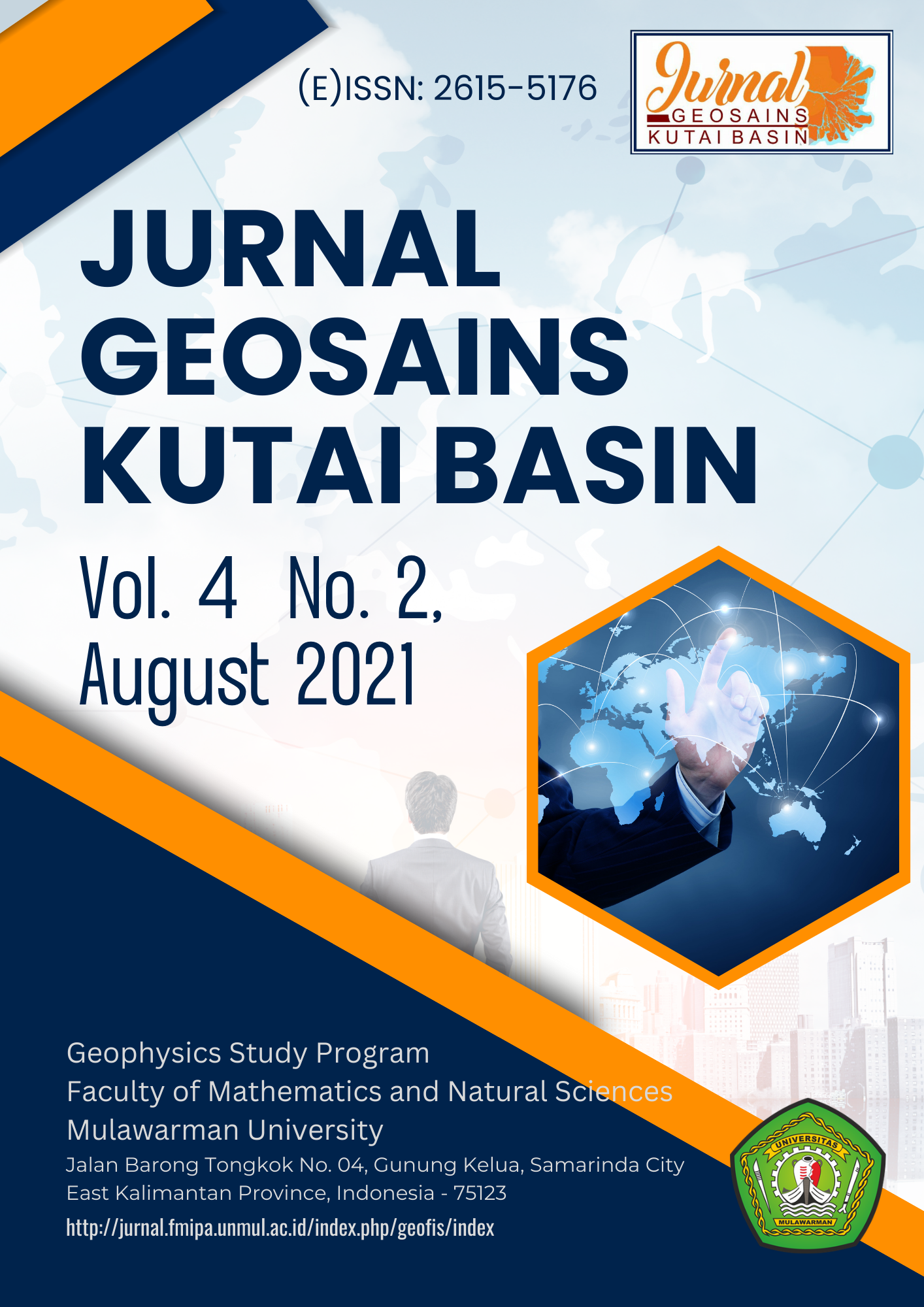Analisa Resiko Gempa Bumi pada Daerah Sesar Kalimantan dengan Metode Least Square
DOI:
https://doi.org/10.30872/geofisunmul.v4i2.627Keywords:
Earthquake, Seismicity, b value, least Square, Fault, Kalimantan Island IndonesiaAbstract
Natural disasters can occur suddenly or through a process that takes place slowly. In some types of disasters such as earthquakes, it is almost impossible to accurately predict when, where it will occur and the magnitude of its strength. While several other disasters such as floods, landslides, droughts, volcanic eruptions, tsunamis and anomalies of the weather can still be predicted beforehand. Even so, disaster events always have a shocking effect and cause a lot of loss both soul and material The surprise occurred because of the lack of vigilance and preparedness in facing the threat of danger resulting in many casualties, injuries and material losses. For this reason, research is needed to determine the level of seismicity on the island of Kalimantan, efforts to reduce the impact of disasters and to determine areas that have the potential for earthquakes. This thesis uses the least square method to calculate the b value / vulnerability of an area, and makes a map of earthquake distribution. The island of Kalimantan has a b-value of -0.018 which means that the island of Kalimantan is classified as a safe area from devastating earthquakes, in the provinces of Kalimantan 2 provinces that have high frequencies but still have low b values. Basically, the island of Kalimantan is a relatively safe area compared to other regions in the country of Indonesia because Kalimantan is not directly crossed by earth plates, but Kalimantan still has the potential for earthquakes.


